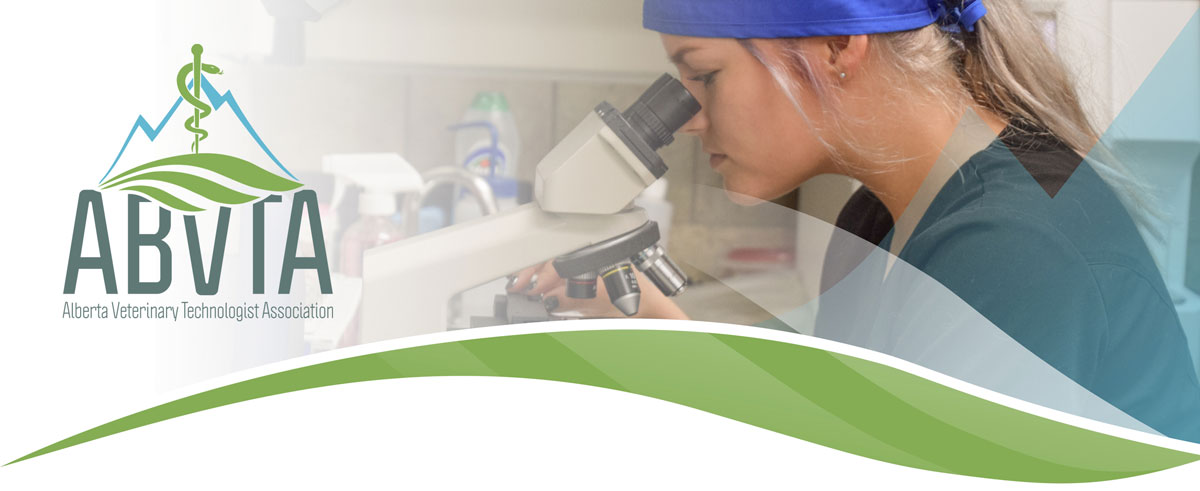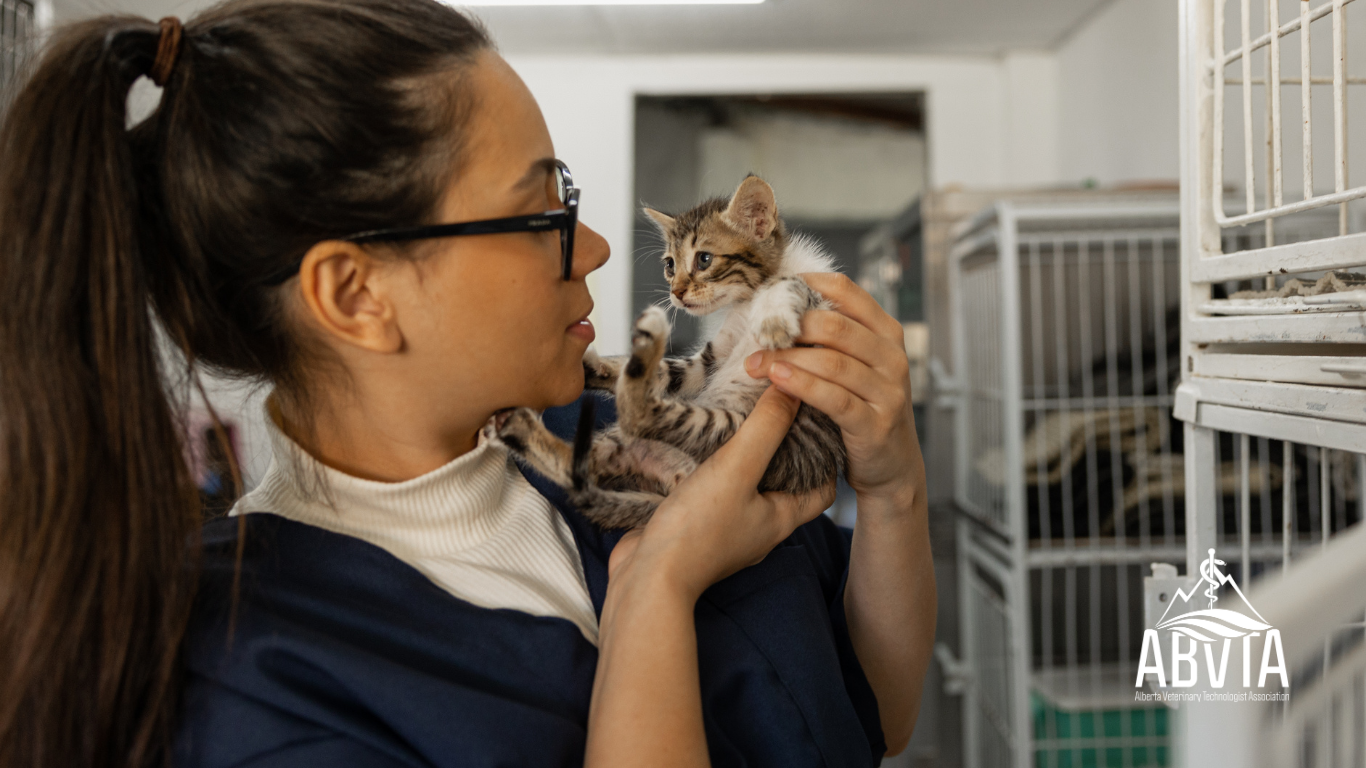For some Registered Veterinary Technologists (RVTs), their day starts in clinical settings with wellness exams, surgery prep, and dietary recommendations. But for those in municipal shelters, the reality is far different.
Shea Lee, an RVT who has spent the last decade working at the City of Edmonton’s Animal Care and Control Centre explained how different the world of shelter medicine is compared to private practice.
“It’s a whole other beast. And not everyone can do the work. But the people that do it, they’re a special kind of people that I work with,” she stated.
In Alberta, municipality shelters handle animals brought in under three legal frameworks: municipal bylaws (such as strays, dog bites, or noise complaints), Alberta’s Animal Protection Act (covering neglect, lack of shelter, or denied medical care), and the Criminal Code of Canada (for cases involving intentional harm or cruelty).
This legal mandate means that RVTs working in municipal shelters see a broad variety of cases every single day.
“We see about 6,000 animals annually, and every single one of those animals is examined by an RVT on intake, and then we see their care throughout their stay with us,” Shea explained.
And it’s not just cats and dogs. The City of Edmonton’s Animal Care and Control Centre routinely works with livestock, birds, rodents, reptiles, and even insects. Some of these animals come from hoarding cases or exotic pet surrenders. Others arrive through criminal seizures or large-scale emergency evacuations.
Although the facility is equipped with a seasoned team, surgical services, and in-house diagnostics, some patients still manage to surprise them.
“We had a giant African land snail come in and let me tell you, I’ve never had to care for one of those before. So, we learn on the fly, we’re flexible, and we lean on our partners in the veterinary community to help us with some of these really different cases,” said Shea.
Where Shelter Work Meets Disaster Response
This flexibility becomes life-saving when disasters strike. The 2016 Fort McMurray wildfires marked a turning point in how animals were handled during evacuations. For the City of Edmonton’s Animal Care and Control Centre, it was their first real emergency deployment.
Karen Melnyk, RVT and now medical supervisor at the City of Edmonton’s Animal Care and Control Centre recalls the moment things shifted.
“The Government felt at that point that people were just going to leave their animals in Fort McMurray when they evacuated, and it was quickly realized that wasn’t going to be the case… We had people coming off the bus with their goldfish in a coffee mug, they were grabbing all their pets and coming.”
Karen was tasked with managing an emergency animal shelter set up inside the Expo Centre, a large convention and exhibition venue in Edmonton that was converted into a temporary evacuation hub. Families arrived in distress, bringing with them what little they could. For many, that meant their pets.
But during the Fort McMurray fires, there was no official plan or framework to guide Karen and her team.
“There wasn’t a formal protocol back then, so we literally just grabbed kennels and food and blankets, and whatever else we thought we would need and set everything up,” she recalled.
Veterinary staff, peace officers, and city responders were doing their best with limited resources, learning in real-time how to shelter companion animals during an uncertain time. Even the idea of allowing pets inside evacuation centres was controversial.
“Before, they wouldn’t allow animals inside the building. People were sleeping in their cars. They were sleeping on the grass outside because they couldn’t stay at Expo with their pets,” Karen said.
The experience exposed a serious gap in emergency planning: no integrated approach existed for the care and sheltering of animals. In response, the Alberta Government, along with several animal welfare partners including the Alberta Veterinary Medical Association (ABVMA) and the Alberta Veterinary Technologist Association (ABVTA) launched the Companion Animal Disaster Response Capability Plan, or CADRC. The initiative created a centralized system for municipalities to activate trained veterinary professionals and volunteers when an emergency is declared.
Since then, the CADRC program has become a routine part of emergency preparedness and emergency evacuations.
“More and more people are getting to know what the CADRC program is and the resources that are out there for their municipalities and their communities that they live in,” Karen added.
Over the years, the City of Edmonton’s Animal Care and Control Centre has learned how to be ready. Today, their shelter response is quick, compassionate, and grounded in experience. When emergencies happen, they can provide short-term kenneling, essential supplies, and peace of mind to pets and their owners.
For Karen and Shea, the resilience of animals is what makes their job so unforgettable.
“We had a lady’s cat who managed to get into the stove and the door closed on the stove. Well, the fire raged around the stove, and the cat survived inside that stove. The owner picked her up and was elated that this cat had survived the fire and had lived in a stove to do it,” Karen recalled.
Medical Care in Emergency Settings
During emergency deployments, RVTs step into roles that stretch far beyond shelter medicine. At temporary sites like the Edmonton Expo Centre, they become frontline responders, triaging incoming animals, coordinating preventive care, and managing short-term homes for displaced pets.
The City of Edmonton’s Animal Care and Control Centre has been activated for emergencies in areas such as Fort McMurray, Edson, Jasper, and the Northwest Territories. Some responses have lasted weeks, even months.
Animals often show up with no medical history and no clear signs of what they’ve been through. RVTs have to rely on their training, instincts, and experience to assess and protect the health of dozens, sometimes hundreds, of animals at once.
“We treat every animal as unvaccinated. You have to think about herd health. If one dog has parvo, it could spread fast. So, prevention is everything,” Shea said.
The work doesn’t end with the animals. RVTs are also there for pet owners, supporting evacuees through the chaos of crisis and displacement. She believes in those moments, trust and clear communication offer a sense of calm when everything else feels out of control.
“They just want to know their animals are in good hands, so they can focus on everything else falling apart around them,” she added.
The Emotional Weight of the Work
Working in shelter medicine is not for the faint of heart. RVTs in this field navigate some of the most difficult cases in veterinary medicine such as neglect, abuse, aggressive animals, and frequent euthanasia decisions.
For Shea, the emotional toll is real, but so is the self-awareness that comes with it. Over the years, she’s learned the importance of healthy boundaries, recognizing when she can take more on, and when she needs to step back.
“I’m very vocal about it. I let my coworkers know, I’m going to be over here crying for a while. I’m fine, I just need to let it pass… Knowing when I’m in a place that I’m able to take on more and knowing when I need to take a step back has been very helpful.”
After the 2016 Fort McMurray emergency response, Karen experienced intense burnout and compassion fatigue, an experience that reshaped how she approaches work and supports others. She believes self-awareness and learning to set boundaries is key in avoiding burnout.
“Self-awareness is huge, you need to know when and be able to say no, and a lot of people in our profession don’t know how to say no. They just do, do, do until they burn out,” Karen stated.
Despite everything, both Shea and Karen return to their jobs in shelter medicine every day because the wins, though hard-fought, can stick with you forever.
“There’s one case that I can just think off the top of my head, and Shea was a part of this one, too. Her name was Tara, and that dog literally was starved to death and had nothing left in her… she couldn’t walk or anything when she came in, and she would look at you, and she was saying, I’m not ready to go. Don’t give up yet. Don’t give up on me…So months in care, blood transfusions, emergency surgery, we saved that dog’s life, and she walked out to a new home. That is the reason why we do shelter medicine,” Karen recalled.
Barriers, Misconceptions, and Hope
Despite the depth and complexity of their work, RVTs working in shelter medicine are sometimes misunderstood, even within the veterinary community. The public sometimes assumes they’re part of a humane society or rescue, and even some clinics underestimate the level of medicine practiced in a municipal shelter.
“We’re often seen as less than, but the medicine we practice is real. It’s creative. It’s critical. And it deserves respect,” said Shea.
Karen has seen how this misunderstanding can lead to breakdowns in care. Some veterinary clinics have refused to perform euthanasia, even when it was the most humane option. As a result, owners with no other options turn to municipality shelters to carry the emotional and ethical weight of the decision.
“Sometimes it causes us to get painted as the bad guys… but we’re the ones giving that animal a dignified goodbye, when no one else will,” Karen stated.
That same lack of understanding extends into emergency response situations. During wildfire evacuations and community disasters, rescue groups often arrive with the best of intentions, but no coordination.
Karen noted that while many organizations provide important support, issues arise when individuals or groups enter evacuated areas without oversight or permission. This is especially concerning in Indigenous communities, where cultural norms, land use, and pet ownership practices may differ.
“Unfortunately, there are rescue groups that try and help by going into communities to take what they think are stray animals, but what they are actually doing is taking people’s pets away,” she said.
These actions can cause real harm. Families return to their homes, often on reserves, only to find their animals missing and removed. It adds another layer of stress to an already devastating situation.
“Wanting to help is fantastic, of course, but going about it in the right way is imperative. Connecting with communities and emergency response teams to ask how you can support from behind the scenes, is a great place to start,” Karen stated.
Both Karen and Shea believe that what’s needed now is better education; for students entering the field, for clinics and municipalities, and for the public. They want people to understand the full scope of what shelter medicine really does, and to recognize that care exists on a spectrum.
“Sometimes, humane euthanasia is the kindest option. Sometimes, treating with limited resources is the best we can do. It’s not perfect, but it’s real, and it matters,” Shea said.
Ultimately, RVTs in shelter medicine show up, day after day, in every emergency, for every animal, and every person who needs them. They’re there for the animal no one claimed, for the owner who can’t afford surgery, and for the dog whose only chance is a second one.
“We hold the paw and the owner’s hand at the same time,” Karen says. “And we’re proud to do it,” added Shea.
So, the next time you see news of a wildfire evacuation or a stray cat on a city street, know that behind the scenes, there’s an RVT somewhere, administering vaccinations, checking vitals, calming a shaking animal, and doing everything it takes to protect our communities.
All members interested in learning more about or pursuing a career in shelter medicine, or who would like to contact Karen or Shea directly, are encouraged to reach out to info@abvta.com.
This article was written by Madison Furness, Marketing and Communications Coordinator, Alberta Veterinary Technologist Association.

